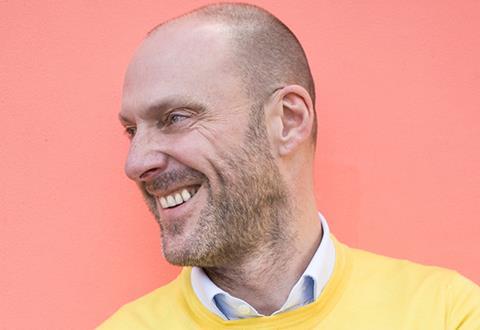We need to start measuring how our projects affect the happiness of children and the loneliness of old folks, writes Martyn Evans

Our built environment world is an exciting, confusing, conflicted and uncertain one right now. We are about to leave the EU (perhaps), we will have a new government before Christmas (maybe) and we have no idea what’s going to happen to our economy.

What this will mean for our industry is anyone’s guess. What we do know, though, is that whatever happens to our political environment and the economy it shapes, our contribution to life in our country remains one of the most important for its future.
Much is debated in studios, at conferences and seminars, in books and online about what this means. A clear thread that runs directly through it all is the one that tries to identify and enrich the social impact that our work delivers to communities where we build.
In the development industry where I work it is becoming accepted that reporting on financial performance alone as a measure of a company’s success, with some lip service paid to non-financial KPIs in an annual report, is not enough for the increasingly complex and community-focused world that is developing around us.
Architects have always put people at the heart of their work; developers less so. It’s because the financial imperative that drives private speculative development is a lens that often filters out any other considerations. How many times have you sat in a meeting with your client debating whether elements you consider to be vital to designing a human-scale scheme are “not affordable”? Well, things are changing.
The very market uncertainties that are causing developers to tighten their belts and architects to worry about their contracts are making us all more acutely aware of the risks to development and how we must mitigate them. One of the biggest is that uncontrollable, unpredictable thing called The People. Those for whom we build.
As voices from communities get louder and more powerful, the more we must listen or suffer the consequences. Of course, being forced to listen is not how this should go. What we should be doing is waking up to the changing nature of communities and understanding that to listen and respond thoughtfully is the right thing to do and, actually, good business. If we build what people want, and what makes them happy then we will all win – happier people, less risky planning applications, quicker sales and good legacy reputations. It is wholly within our power to act in this way for these outcomes.
To understand how well we are doing in listening and building places that make people happy, we need to work out how to measure the impact of what we do. In the same way that the systems to measure the environmental sustainability of the projects we design were numerous and untested 20 years ago, so are the metrics now being developed to measure the social impact of development.
>> Also read: Making the world a better place - through design
How are we to measure the happiness of children or the loneliness of older folks? It’s easy to measure an increase in jobs created and extra taxes levied that will pay for essential social services from new developments, but what about community cohesion or the mental health of its members?
Professor Erik Bichard runs Real Worth, a company spun out of a research unit at Salford University. He has developed an innovative model of measurement called SuROI – sustainable return on investment. Their model attempts to place a monetary value on social and economic change in a complex set of metrics that result in an impact index that could become as normal a measurement as a Breeam assessment. Many other organisations are building models to measure the social impact of development including JLL’s Upstream consultancy.
This is a hugely exciting shift in emphasis for our industry. The ability to measure impact more easily means we could knock down the barriers to doing it in the first place. Like recycling at home, where research shows people are prepared to do more if they are offered easy ways to understand the individual impact their change in behaviour can make, so architects and developers are more likely to change the way they work if they can easily measure its social impact and see the benefit to their bottom line.
















No comments yet